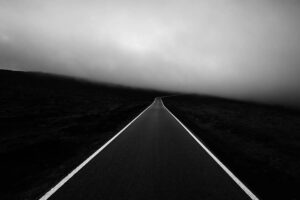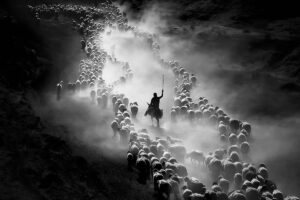 |
$1000 might sound like a lot of money for a camera, but it's probably the least we'd recommend spending if you want to go beyond phone photography. The picks on this list will give you more control than a phone and offer a more satisfying photographic experience.
At this price point, your main options will be entry-level interchangeable lens cameras or enthusiast-tier compact cameras with a built-in lens. Compact cameras offer more control than a phone and a greater zoom range, but – despite having sensors that are around 60% larger – likely won't offer a huge jump in image quality compared to the latest flagship phones.
Meanwhile, an interchangeable lens camera won't be as easy to carry around and comes with the added expense of lenses. However, they can make you feel even more involved in the photographic process, and the flexibility of swappable lenses will let you learn and grow into different types of photography as you develop your passion. They also feature much larger sensors than phones and the majority of compacts.
It's worth noting that camera makers sometimes assume that beginners will stick with the basic 'kit' zoom that comes with the camera, so it's worth checking whether a good selection of lenses is available (at a price you're willing to spend) before deciding which brand's system to buy into.
Our recommendations:
- Best camera under $1000: Canon EOS R10
- The better performer: Nikon Z50II
- The affordable kit: Sony a6100
- Best compact camera under $1000: Sony Cyber-shot DSC-RX100 VA
- Best camera for content creators under $1000: Fujifilm X-M5
Best camera under $1000: Canon EOS R10
24MP Dual Pixel APS-C CMOS sensor | 4K/30p video (60p with crop) | 15fps shooting (23fps with e-shutter)
 |
| Photo: Shaminder Dulai |
What we like:
- Capable stills and video camera
- Simple, effective AF in stills
- Relatively easy-to-use
What we don't:
- Video autofocus is less effective than stills
- Mediocre battery life
- Few sensible RF lens choices
There are a few things that earn it the top place of this list. The first is its stand-out usability, with dual top-plate dials for controlling exposure settings and a joystick to control its very capable autofocus system. It also has a decent selection of lenses; third parties like Sigma have stepped in to round-out the selection of primes and higher-end zoom lenses available for it, meaning you've got a lot of good options if you want to move beyond the kit lens that came with it.
With the EOS R10 Canon has re-created the capability and usability of its popular Rebel series DSLRs in its RF mirrorless lens mount. Now that there's a wider variety of lenses available for it, it's an excellent pick for those looking to get into photography.
See Canon EOS R10 studio scene
The other options
While we much prefer the higher level of control that the EOS R10 provides, the less expensive Canon EOS R50 may also be worth a look if you're extremely budget-conscious but still want to stay in the Canon ecosystem. It has fewer control points – most notably, it misses out on the EOS R10's joystick – and it loses out on features such as 4K/60p video capture and an articulating display, but it's still pretty capable.
We don't recommend the cheaper still EOS R100. It's based on a previous generation of technology, so it's slower and has less sophisticated autofocus.
The better performer: Nikon Z50II
20.9MP APS-C sensor | Subject recognition AF | Full-width 4K video up to 30p
 |
| Photo courtesy Nikon |
What we like:
- Twin top-plate control dials
- Simple tracking AF w/ subject recognition
- Strong video specs
What we don't:
- No sensor stabilization
- Weak battery life
- Limited zoom lens selection
The Z50II makes a case for being the best pick for beginners, thanks to a simple and effective AF system with automatic subject detection. However, while plenty of prime lenses are available, Nikon appears to be blocking bright zooms from third-party makers, limiting your upgrade options compared with its rivals.
Read our Nikon 50II Initial Review
What about the Z fc?
Nikon's Z fc is a stylish camera based on the original Z50, which means it has the same sensor as the Z50II. We like it a lot, but the autofocus on the Z50II is such a marked improvement that it's hard to recommend picking up a Z fc at this point – you can read our full comparison between the two cameras here. If you have a strong attachment to the Z fc's aesthetics, your best option is probably holding-off for a bit to see if Nikon updates the Z fc. If that's not an option, see if you can get it on sale or used.
The affordable kit: Sony a6100
24MP APS-C sensor | Hybrid AF with Real-time Tracking | 4K video capture
 |
|
The Sony a6100 offers a lot of power in a compact, well-priced body. The 16-50mm power zoom isn't the best, though. Photo: Richard Butler |
What we like:
- Excellent autofocus system
- 4K/30p video recording
- Tilting touchscreen LCD
What we don't:
- Less robust build quality
- Rolling shutter 'jello effect' present in 4K video
- Crop when recording 4K/30p video
It was a very capable and affordable camera when it was launched several years ago, offering some of the best autofocus around and a wide selection of lenses. The latter part is still an advantage, but many competitors' autofocus systems are now on par with, or even more capable than, the a6100's. However, it's still worth considering if you want to get both a camera body and a decent lens for under $1,000.
See the Sony a6100 studio scene
Best compact camera under $1000: Sony Cyber-shot DSC RX100 Va
20MP 1" Stacked CMOS sensor | 24-70mm equiv. F1.8-2.8 lens | 4K video capture
 |
| The RX100 VA can deliver excellent image quality, backed up by good autofocus |
What we like:
- Excellent photo quality
- Very good AF for a compact
- 24 fps burst shooting with deep buffer
What we don't:
- Interface and controls can be overwhelming
- No touchscreen
- Limited battery life
The Sony Cybershot DSC-RX100 VA is an updated RX100 V with the same 20MP Stacked CMOS sensor, fast 24-70mm equiv. lens, hybrid AF system, clever popular viewfinder and excellent 4K video quality. The 'VA' adds a larger buffer, new metering, white balance and AF modes, an improved EVF refresh rate and more.
Sony essentially created this class of cameras with the original RX100 model. A large sensor gives image quality that's still a match for a good smartphone but with the benefit of an actual zoom lens. The Stacked CMOS sensor and a built-in viewfinder add to the cost but also create a very powerful camera.
The RX100 VII is also worth a look. It's more expensive, and its lens is slower, taking away some of the low light performance, but it offers a much longer zoom, giving still more benefit over a smartphone.
Read our Sony Cyber-shot RX100 V review
See the Sony Cyber-shot DSC RX100 V studio scene
Best camera for content creation: Fujifilm X-M5
26MP APS-C BSI CMOS sensor | Fully articulated 3" LCD | 6.2K 3:2 video up to 30p
 |
What we like:
- Great JPEG colors with dedicated dial
- Solid selection of vlogging features and UI
- Good level of direct control
What we don't:
- No viewfinder
- AF tracking performance isn't the strongest
- Unstabilized sensor
It's aimed at creators taking pictures and video for the web, with a suite of vlogging features meant to let you shoot video that's ready to upload as soon as you transfer it to your phone and a dial that lets you easily switch between 'Film Simulations,' Fujifilm's much-loved color modes. It also has the full suite of stills features from larger, more expensive models – minus a viewfinder – and its X-mount lens mount also gives you access to the most complete range of APS-C lenses, no matter where your photography or content creation journey takes you.
Read our Fujifilm X-M5 initial review
What if I only vlog?
If you plan to shoot more videos than photos, you may want to consider the Sony ZV-E10 II. Its lack of a mechanical shutter makes it worse for photography, but its autofocus tracking performance in video sets it apart from the X-M5. It also has video-centric features like a front tally light and included wind sock, and it can shoot 4K 60fps without having to crop in too tightly on the frame.
Click here to read the ZV-E10 II review
Sony also makes a compact vlogging camera called the ZV-1 II. It gives up a lot compared to the ZV-E10 II: it has a much smaller Type-1 sensor, no 10-bit video, no 4K 60fps, and, obviously, no ability to switch out lenses. In return, you get built-in ND filters, which will help if you're shooting in direct sunlight, and a built-in lens, which means that you're getting a complete package for under $1,000. Still, it's hard to recommend when cameras like the DJI Osmo Pocket 3 exist and when many phones rival it in vlogging capabilities.
Click here to read our Best Cameras for Vlogging buying guide
Why you should trust us
This buying guide is based on cameras used and tested by DPReview's editorial team. We don't select a camera until we've used it enough to be confident in recommending it, usually after our extensive review process. The selections are purely a reflection of which cameras we believe to be best: there are no financial incentives for us to select one model or brand over another.

 4 weeks ago
12
4 weeks ago
12








 English (US) ·
English (US) ·